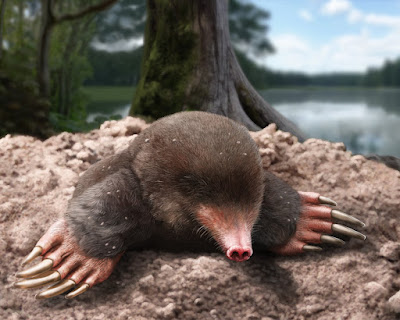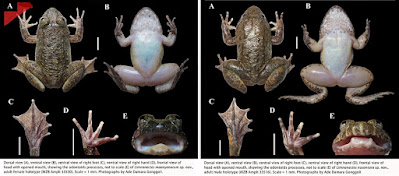 |
Triplophysa yangi Jiang, Cao, Song, Yi & Yang,
in Cao, Song, Yi, Xiang, Yang, Li et Jiang, 2025. |
Abstract
Cavefish are of considerable interest owing to the remarkable adaptations for surviving in harsh subterranean conditions. These adaptations, often described as constructive traits or regressive features, reflect trade-offs in metabolic requirements and energy utilization in response to life in darkness. In this study, we describe two new cavefish species, Triplophysa yangi sp. nov. and Triplophysa wenshanensis sp. nov., from karst subterranean rivers in Yunnan Province, China. Triplophysa yangi is distinguished from its congeners by its bilaterally expanded anterior swim bladder chambers, which protrude from the enlarged bony capsule, distending the lateral body wall and becoming externally visible. Additionally, it has highly developed pectoral and pelvic fins with filamentous extensions. Triplophysa wenshanensis can be identified by its nearly cone-shaped head, triangular head profile, and light brown to flesh pink body colour with faint brown blotches. Molecular phylogenetic analysis places both species in the hypogean group of Triplophysa, increasing the number of cavefish species in this genus from 39 to 41. The most distinctive feature of T. yangi, its expanded anterior swim bladder chambers protruding beyond the enlarged bony capsules, might represent an innovative stygomorphic trait among Chinese cavefish. This trait is hypothesized to be associated with a unique energy-saving buoyancy mechanism, crucial for the ability of the species to remain suspended and survive in perpetual darkness.
Triplophysa, cavefish, Yunnan, morphology, phylogenetic analysis
 |
Live specimens of Triplophysa yangi.
A, downwards gesture. B, ventral view. C, lateral view. D, turning gesture. |
 |
| Reconstruction of the skeleton and bony swim bladder capsules of Triplophysa yangi using X-ray microtomography. |
Triplophysa yangi Jiang, Cao, Song, Yi & Yang sp. nov.
Etymology: The specific epithet of the new species, yangi, is named after Dr Junxing Yang, in recognition of his outstanding contributions to the research and conservation of cavefish diversity in China. Consequently, the Chinese name for the new species is ‘Yáng Shì Máng Gao Yuán Qiu’ (杨氏盲高原鳅).
Triplophysa wenshanensis Jiang, Cao, Song, Yi & Yang sp. nov.
Etymology: The specific epithet of the new species, wenshanensis, is derived from the type locality, Wenshan Prefecture, in Yunnan Province. The Chinese name for this new species is ‘Wén Shan Gao Yuán Qiu’ (文山高原鳅).
Jianhan Cao, Shuang Song, Wenjing Yi, Hongmei Xiang, Hongfu Yang, Jie Li and Wansheng Jiang. 2025. Two New cavefish Species of
Triplophysa (Cypriniformes: Nemacheilidae) from the Karst Subterranean Rivers of Yunnan, China.
Zoological Journal of the Linnean Society. 204(1) zlaf033. DOI:
doi.org/10.1093/zoolinnean/zlaf033 [27 May 2025]
https://naked-science.ru/article/biology/ryba-v-spasatelnom-kruge






































